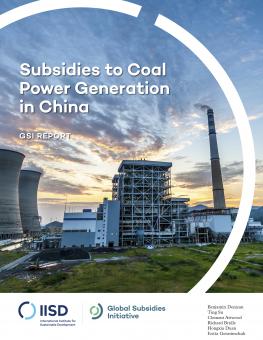
Subsidies to Coal Power Generation in China
This comprehensive inventory of subsidies to coal generators in China shows that the coal industry receives considerable levels of government support.
This report seeks to assess the cost to the Chinese government, in terms of subsidies, of operating and investing in coal-fired electricity generators, the predominant source of electricity in China.
We find that the value of the subsidies to coal-fired generation was at least CNY 252 billion (USD 37.7 billion) in 2014 and CNY 120 billion (USD 18 billion) in 2015.
Subsidies provide an advantage to coal generation over other technologies. The 2016 G20 subsidy peer review was a major step towards transparency, particularly for oil and gas subsidies. However, it did not include an analysis of the subsidies to coal-fired electricity generators. It is recommended that policy-makers expand the scope of the subsidy review processes to include the subsidies described here.
You might also be interested in
Heatwaves to hit China once every 5 years as global extreme weather events multiply, study finds
Record-breaking heatwaves that have scorched North America, Europe and China are set to worsen in future unless the world stops burning fossil fuels, according to a study by the World Weather Attribution (WWA) academic initiative.
Are Countries Walking the Talk on Cutting Carbon?
In the race against climate change, increasing ambition over time is key. But revised commitments from parties to the Paris Agreement lack two critical components of ambitious climate action.
Doubling Back and Doubling Down: G20 scorecard on fossil fuel funding
This study tracks, for the first time, each G20 country's progress on ending support for fossil fuels—ranking their transparency, commitments, and financial support to oil, gas, and coal.
Health Co-Benefits from NDC Implementation in China
This report summarizes the policy efforts that the country is undertaking to meet its NDC targets and the related expected health co-benefits, based on recent scientific literature. It compares public budget allocations to health, climate change-related measures and subsidies to fossil fuels.